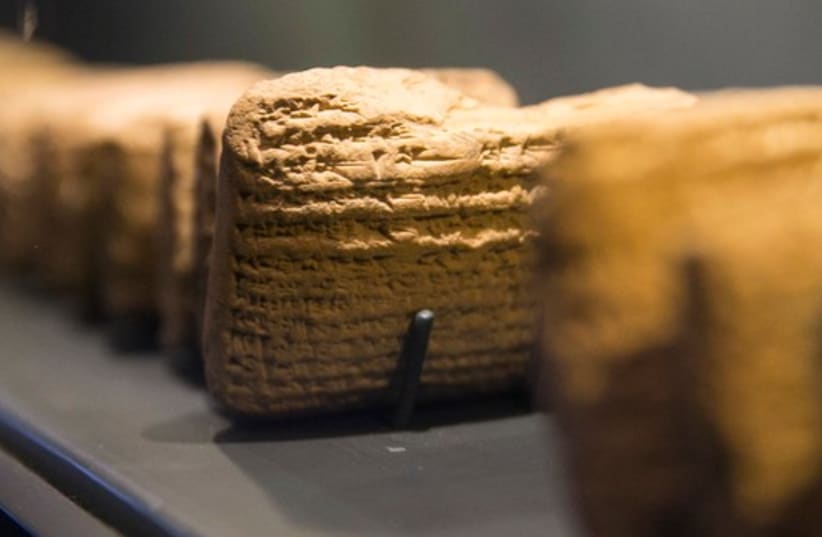A cuneiform fragment discovered at Tel Mikhmoret on the Mediterranean coast north of Netanya suggests Babylonians were living in Samaria in the 6th century BCE.The Akkadian text, studied by Prof. Ira Spar, Prof. Samuel M. Paley and Prof. Robert R. Stieglitz, was published in the current edition of the Israel Exploration Journal. Stieglitz and Paley were involved in ongoing excavations at the site between 1979 and 1992.The cuneiform tablet documenting a slave sale refers to a pym weight, a polished stone weighing about 7.6 grams. Since these stones were in common use in biblical Israel but not in ancient Mesopotamia, Spar, Paley and Stieglitz concluded the text was written in the Levant, and reflected a business transaction regarding moveable property, namely slaves, in the biblical kingdom of Israel.That kingdom, one of two successor states to the United Kingdom of Israel and Judah, was founded around 930 BCE. The “Northern Kingdom,” also called the Kingdom of Samaria to differentiate it from the Southern Kingdom of Judah based in Jerusalem, fell to the Assyrians, presumably under King Shalmaneser V, who died while besieging the region in 722 BCE.While the presence of Babylonians in the region has been assumed by many scholars, archaeological evidence attesting to their presence has remained scant.The pym weight reference in the cuneiform corresponded with mentions of the weight designation in other texts, including the Bible. In Samuel 13:21, the text described how the Philistines would not allow for blacksmiths in the land of Israel, and Israelites were dependent on Philistines to have agriculture equipment made and sharpened. The price described for such service is described as a pym, or two-thirds of a shekel. Pym weights measure about 15 mm. in diameter, and are often inscribed with Phoenician letters.Tel Mikhmoret and its neighboring sites served as a port city during the late Bronze era (1550 BCE to 1200 BCE). Archaeological remains reflect the development of sea trade on the Mediterranean Basin, which began during the Middle Bronze age (2000 BCE to 1500 BCE), and reached a peak during the late Bronze era.While much of the population of the Northern Kingdom was deported by Assyria and a new population sent to replace the so-called Ten Lost Tribes, the conquerors encouraged agricultural activity to continue in the area’s many unfortified villages.Tel Mikhmoret remained settled into the Hellenistic period (332 BCE to 37 BCE), and onward through the Roman and Byzantine eras (32 BCE until 638 CE).
Discovered cuneiform reveals Babylonian slave trade in biblical Samaria
The fall of Samaria, which has been known in the Bible to be ruled by the Israelites, has been discussed by numerous scholars and remains a key issue in the Bible.
